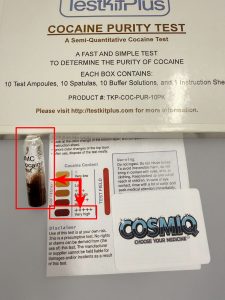Harm Reduction:
A Guide to Safer and Informed Practices
Why Harm Reduction Matters
Whether using recreational drugs, therapeutic psychedelics, or research chemicals, harm reduction provides a safer framework for users to:
- Minimize risks.
- Enhance the positive effects of substances.
- Avoid unnecessary health complications.
This approach recognizes that while substance use may occur, taking proactive steps can significantly reduce potential harm.
Core Principles of Harm Reduction
1. Informed Decision-Making
Education is the foundation of harm reduction. Understanding the substance’s:
- Effects on the body and mind.
- Proper dosages.
- Possible risks and interactions.
Informed users are better equipped to navigate their experiences safely.
2. Testing Substances

- The substance is what you expect.
- It’s free from harmful contaminants.
Testing provides confidence and peace of mind, significantly reducing risk.
3. Safe Dosing Practices
Start with a low dose and assess your reaction before increasing. This approach minimizes the chance of overwhelming experiences or adverse effects, ensuring a safer and more manageable journey.
4. Controlled Environments
The setting in which substances are used greatly impacts safety. A harm-reduction-friendly environment includes:
- A calm, familiar space.
- Supportive individuals or trip sitters.
- Access to water and other essentials.
Reducing environmental stress factors promotes a more positive experience.
5. Avoiding Dangerous Interactions
Mixing substances—whether with other drugs, alcohol, or medications—can cause unpredictable and harmful effects. Harm reduction encourages users to stick to one substance per session and consult medical professionals about potential interactions.
6. Accessing Post-Use Support
The effects of substance use extend beyond the immediate experience. Support systems, such as counseling, peer groups, or integration practices, help users process and reflect on their experiences in a healthy way.
How Harm Reduction Benefits Society
Harm reduction extends beyond the individual, fostering a safer and healthier community by:
- Reducing emergency incidents related to substance use.
- Encouraging honest, stigma-free conversations.
- Promoting access to reliable resources like testing kits and safe consumption spaces.
Conclusion
Harm reduction is about empowering individuals with the knowledge and tools they need to minimize risks while maximizing safety. It’s a compassionate approach that values informed decisions and personal responsibility over judgment.
For more information and resources, visit trusted organizations like DanceSafe and Harm Reduction International.
By embracing harm reduction practices, we can create a safer, more supportive environment for everyone.
